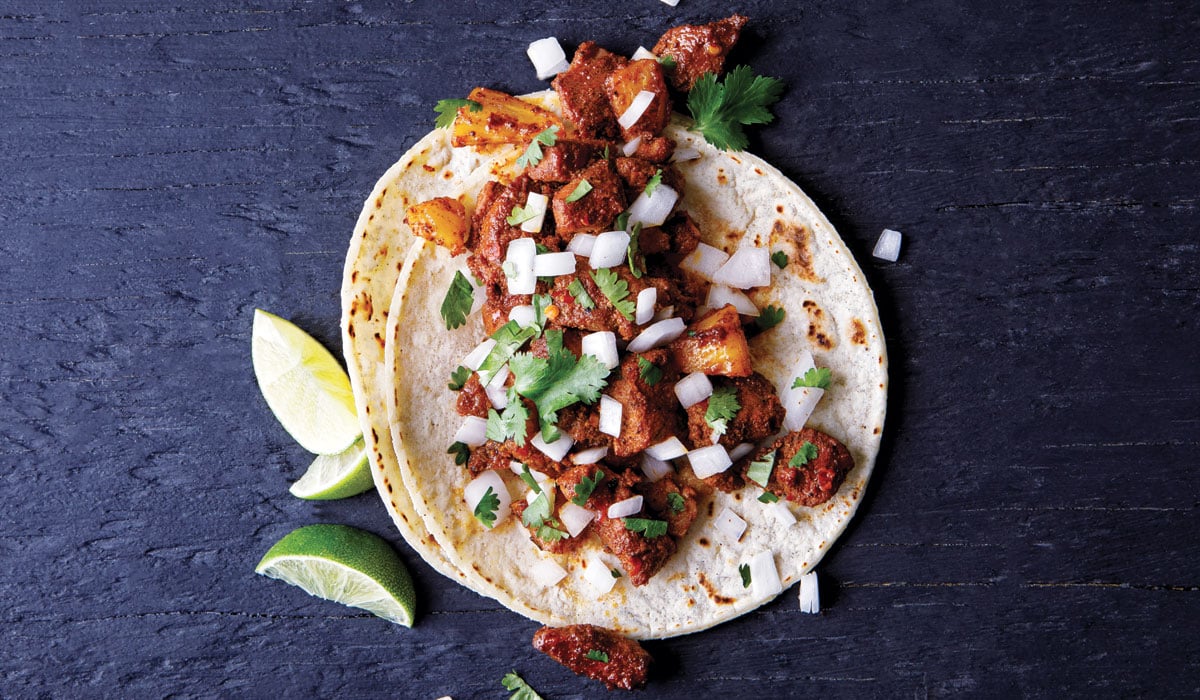Takeout and drive-thru orders have always been a consideration for the quick-service restaurant industry, and with the popularity of third-party delivery services and other off-premises opportunities, how a menu item traveled became one of the industry’s largest concerns.
Now, with the outbreak of COVID-19 having shut down dining rooms across America, off-premises isn’t just a nice-to-have—it’s a lifeline. And menu innovators must adapt so that their food is still high-quality after it arrives at its final destination. No matter how delicious a dish is, if it doesn’t travel well, it could risk a poor customer experience. In the age of Yelp reviews, social media, and hyper competition, that’s a risk restaurants can’t take.
“People know what they want. Right now, it’s off-premises eating, and it’s becoming easier every day to express that via technology,” says Dave Mohammed, director of marketing at 60-unit Chronic Tacos, who noted before the coronavirus that the brand’s sales mix had transformed to where off-premises sales were roughly 30 percent of overall sales.
In general, the menu items that do the best on delivery menus are wraps and sandwiches, which are portable and naturally hold their heat. For Curry Up Now, a California-based Indian fast casual that began as a food truck, the Tikka Masala Burrito has proved a top seller as the brand has scaled to include about a dozen locations and three food trucks. “The burrito stays hot for a long period of time and is easy to eat on the run,” says Akash Kapoor, founder and CEO.
Bowls like the Deconstructed Samosa loaded with garbanzo beans, chutneys, and a choice of protein have also done well with delivery, Kapoor says, as have salads, kebabs, and buffet family-style meals for larger catering orders.
Curry Up Now had embraced the off-premises menu so much that it regularly used it pre-coronavirus as a platform for menu experimentation. “You can test items that aren’t on the regular menu and get guest feedback before officially launching the item in the restaurants,” Kapoor says.
Likewise, SAJJ Mediterranean—with 14 restaurants and two food trucks—offers off-premises–exclusive menu items like its kofta kebab, plant-based Impossible kebab, and chicken kebab. “Those items are great for large parties and hold well between our restaurant and the time they’re eaten off-site,” says Zaid Ayoub, founder and CEO. Tabbouleh and baba ghanoush are also offered as off-premises–exclusive sides. Ayoub sees a lot of trial and error in the brand’s future as off-premises demand continues to grow. “I expect new, creative items, whether in cross-culture formats or packaging innovation, that can retain freshness better,” he says.
Catering is also a huge part of SAJJ’s business focus, which helps the brand be competitive in other off-premises opportunities. “All of our processes, ingredients, and systems are geared toward catering, and we lead location selection with a strong catering focus,” Ayoub says.
For snack-focused brand Wetzel’s Pretzels, portable and easy-to-share items like the brand’s Wetzel Bitz, Dog Bites, and Pizza Bitz made up 50 percent of the product mix for both delivery and on-premises at the 350-plus-unit brand before the pandemic. Wetzel’s process of innovation was to create snack-worthy menu items that would stand out and travel well. This is how the Cherry Boba Frozen Lemonade layered with popping boba pearls and natural cherry purée, and the Fruity Pebbles Pretzel with a cereal milk glaze, were conceptualized.
Healthier items, however, are also on the brand’s radar. “Plant-based proteins are everywhere, and I think you’ll see more around delivery,” says Jennifer Schuler, CEO at Wetzel’s. “Consumers are looking for healthier options, but still want the convenience of delivery.”
Health and plant-based are trends that 1,100-plus unit brand Smoothie King is betting on, as well. The brand launched its Healthy Rewards app in 2018, and all of its smoothies are now free of gluten, artificial colors and flavors, and preservatives. Recently, the company promoted Keto Champ smoothies that are low in sugar and carbs, and its HIIT Fit smoothies that have a ratio of 40 percent carbs, 30 percent protein, and 30 percent fat using FITAID vitamin blends and paleo protein. “Smoothies are the perfect meal on the go,” says Lori Primavera, director of product marketing.
Similarly, to meet the consumer demand for vegan and vegetarian-friendly menu items, Pokeworks added the Vegan Ahi Tuna Bowl featuring marinated beets to its Pokeworks Portable menu. Michael Wu, CEO, noted before the coronavirus outbreak that he saw bowls, breakfast, and small bites trending for delivery orders. Bowls specifically travel very well and offer guests customizability to be able to meet dietary needs.
Looking to the future, menus will surely focus on delivery even more—even when social distancing is in the rearview mirror. “The market will home in on menu items that travel well, and that will catch a wider net of customers,” Kapoor at Curry Up Now says.
Lawrence Vavra, CEO at growing delivery-only brand Pizzaoki, also thinks that off-premises menus will continue to narrow. “Where an on-premises menu may have something for everyone to maximize the ability to serve every potential customer, a delivery menu by nature is likely smaller if you accept that not every item on a menu is necessarily craveable and scalable as a delivery item,” he says.
But with the potential for limited-time items to trend overnight, restaurants like Chronic Tacos are thinking through new ways to deliver more menu items over shorter distances.
“We are experimenting with developing a smaller footprint, different restaurant sizes, kiosk-driven models, and opportunities of developing dedicated third-party/takeout kitchens,” Chronic Tacos’ Mohammed says. “We are also constantly making adjustments to current locations to accommodate for this growing trend in off-premises eating.”
Of course, packaging is also having a renaissance, making it easier to transport traditionally difficult items like pancakes or waffles.
“With the high cost of third-party delivery commissions, we have to be aware of ways to become more efficient and productive to offset these costs,” Mohammed says.











